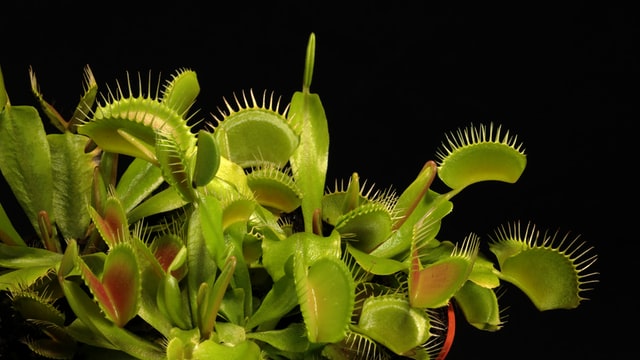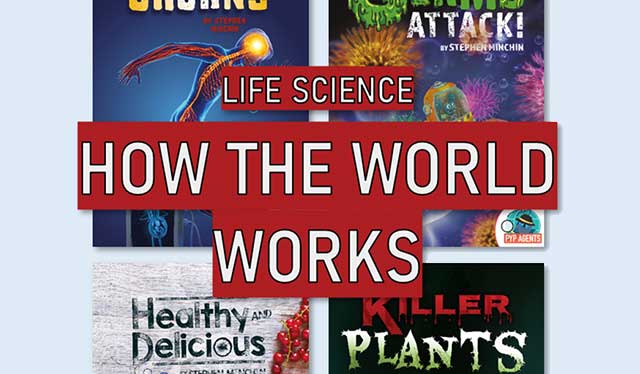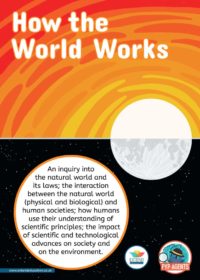The world is an amazing place. Not only is the planet itself full of wonders to experience and sights to see, but the living creatures that inhabit it are just as fascinating – including the ones that are too small to spot with the naked eye.
This is reflected in the IB Primary Years Programme, where children are encouraged to inquire about the natural world and how societies interact, along with humans’ technological advancements and understanding of scientific principles, and how that impacts the world around us. (You can download our free PYP How the World Works poster to print off to remind children about the transdisciplinary theme here.)
We’ve grouped our PYP books into helpful bundles that match the PYP transdisciplinary themes and picked out some of our favourite content from inside or created some activities to use alongside them.
Here are some activities related to the four books in one of our ‘How the World Works’ PYP Agents bundles.
Awesome Organs
The skin is our largest organ and it has a far greater role than just keeping all of our other organs in. It forms a protective barrier against outside substances, lets us touch things, helps control our body temperature (with sweating and shivering) and uses sunlight to make Vitamin D. That’s why it is important to protect our skin and that’s where this easy experiment involving sun lotion comes in.

Sun lotion is measured in SPF (sun protection factor) and blocks the sun by the amount shown by its number. So 30 SPF means only 1/30th of the sun will get through compared to wearing no sun lotion (or you will take 30 times as long to burn), and 50 SPF means only 1/50th of the sun will get through.
What you need for the experiment:
- Black paper
- Sun lotion (at least SPF 30)
Instructions:
- Divide up the paper. You could fold it in half or draw a simple pattern.
- Spread sun lotion on to the sections you want to protect from the sun. Make sure you label which is which.
- Leave the paper in the sun for a few hours.
- Compare the differences between the sections of paper. Are they still the same colour? What does this show?
If you want to take this experiment a step further, use different strength sun lotions and test them all at the same time. You could also leave one piece of paper in the shade to compare.
Healthy and Delicious
Drinking more water is a simple way that many of us can be more healthy. It is especially important to drink more when we are exercising, if it’s hot and if we are ill. Drinking enough water means we can keep our body at the right temperature, get rid of wastes in our body and avoid dehydration.

Children can read about drinking water in our Healthy and Delicious book or read the summary paragraph above, and then do their own further research on the subject. As a class or in pairs, children should come up with ideas to encourage others to drink enough water. This might be tips like drinking water instead of sugary drinks, carrying a reusable bottle to refill (which can also tie in to recycling) or thinking of a fun way to track how much everyone has drunk throughout the day.
Children can then use these ideas, along with the facts they have learned about drinking water, to make posters that encourage other children to drink enough water throughout the day.
Killer Plants
Not all plants are defenseless – and we don’t just mean ones that wear spikes like cacti. While learning about the different types of killer plants (including the pitcher plant, the sundew and the fantastically named bladderwort), children can make their own venus flytrap with these simple instructions.

What you’ll need:
- Thick cardboard cut into a circle (can be a paper plate)
- Green paint or construction paper
- Pink paint or construction paper
- Thinner white cardboard or paper cut into triangles
- Glue or tape
- Tissue paper, buttons, pompoms or similar
Instructions:
- Use paper or paint to colour one side of the cardboard circle green (this will be the outside).
- Use paper or paint to colour the other side of the cardboard circle pink (this will be in the inside).
- Glue or tape the triangles around the edge of the circle.
- Fold the circle in half, making sure the pink is on the inside. The flytrap is complete!
- Bunch the tissue paper up or use the pompoms or buttons to replicate bugs.
- Children can play a game where they catch the ‘bugs’ with their venus flytraps. You could use different colours to assign different points to different bugs.
- Children can also write facts they have learned inside their flytraps for a classroom display.
When Germs Attack
Everyone knows that we should wash our hands (especially given the world events in the last few years) but it can be difficult for children to understand why we have to wash them so thoroughly. 20 seconds can feel way too long – surely a quick rinse under the water is good enough? And how do they know if they’ve washed away every germ when the germs are smaller than a grain of sand so they can’t even see them?
This is when glitter germs come in to show them how easily germs spread and why they should really be washing the bits of their hands that they might be tempted to ‘forget’.


We hope that this will help you to explore How the World Works with your class!
Discover the rest of our IB PYP resources here.



